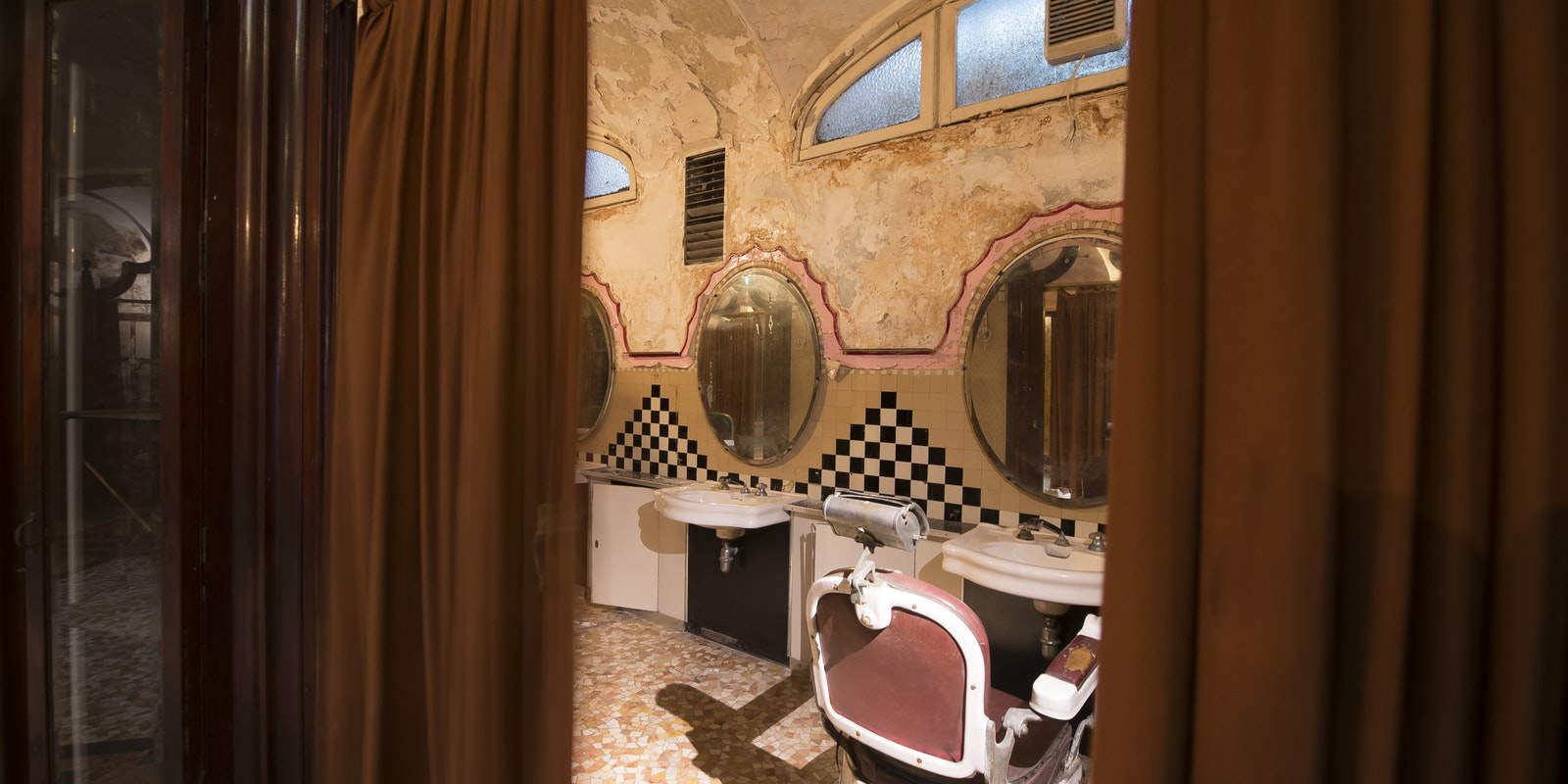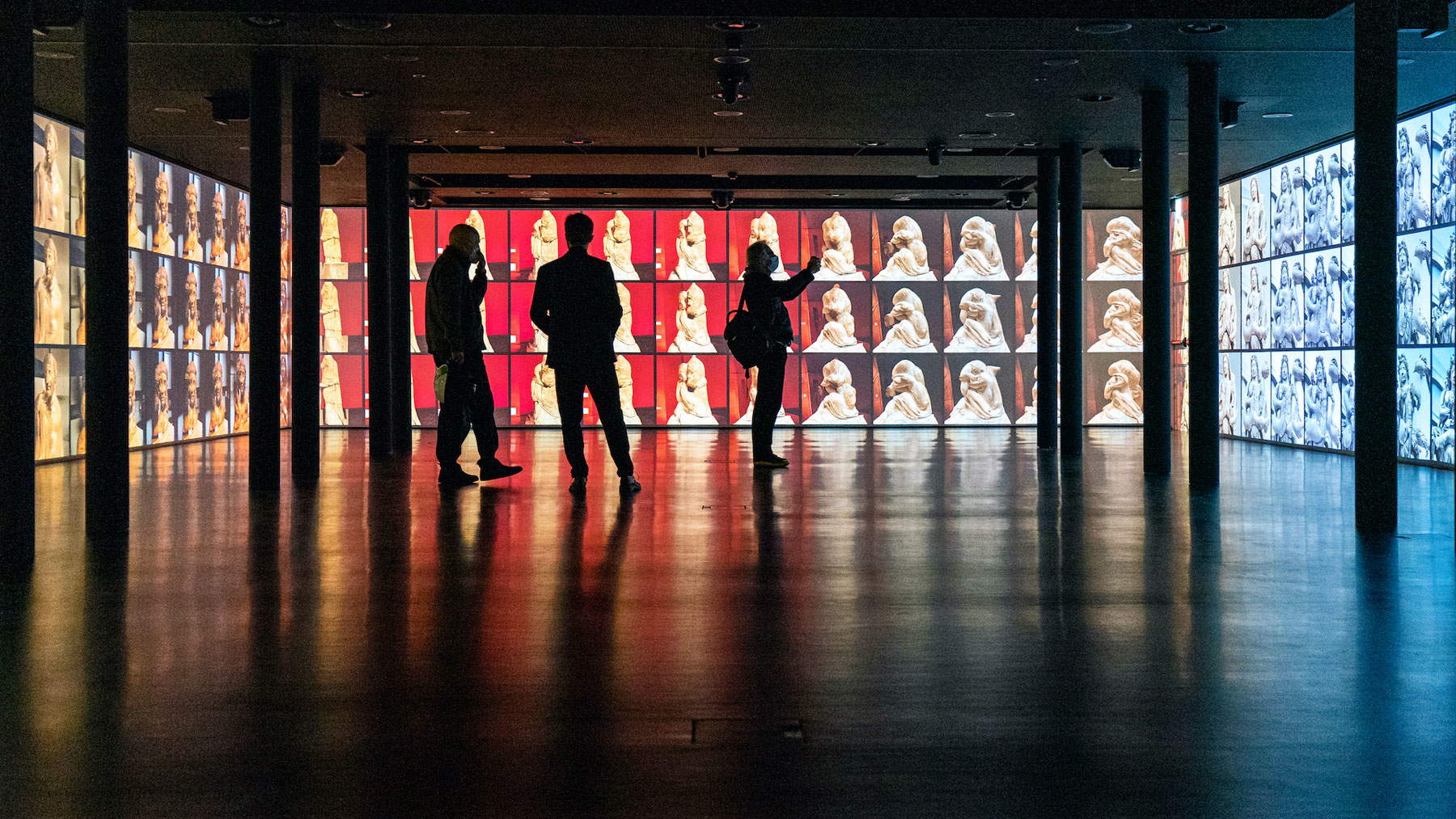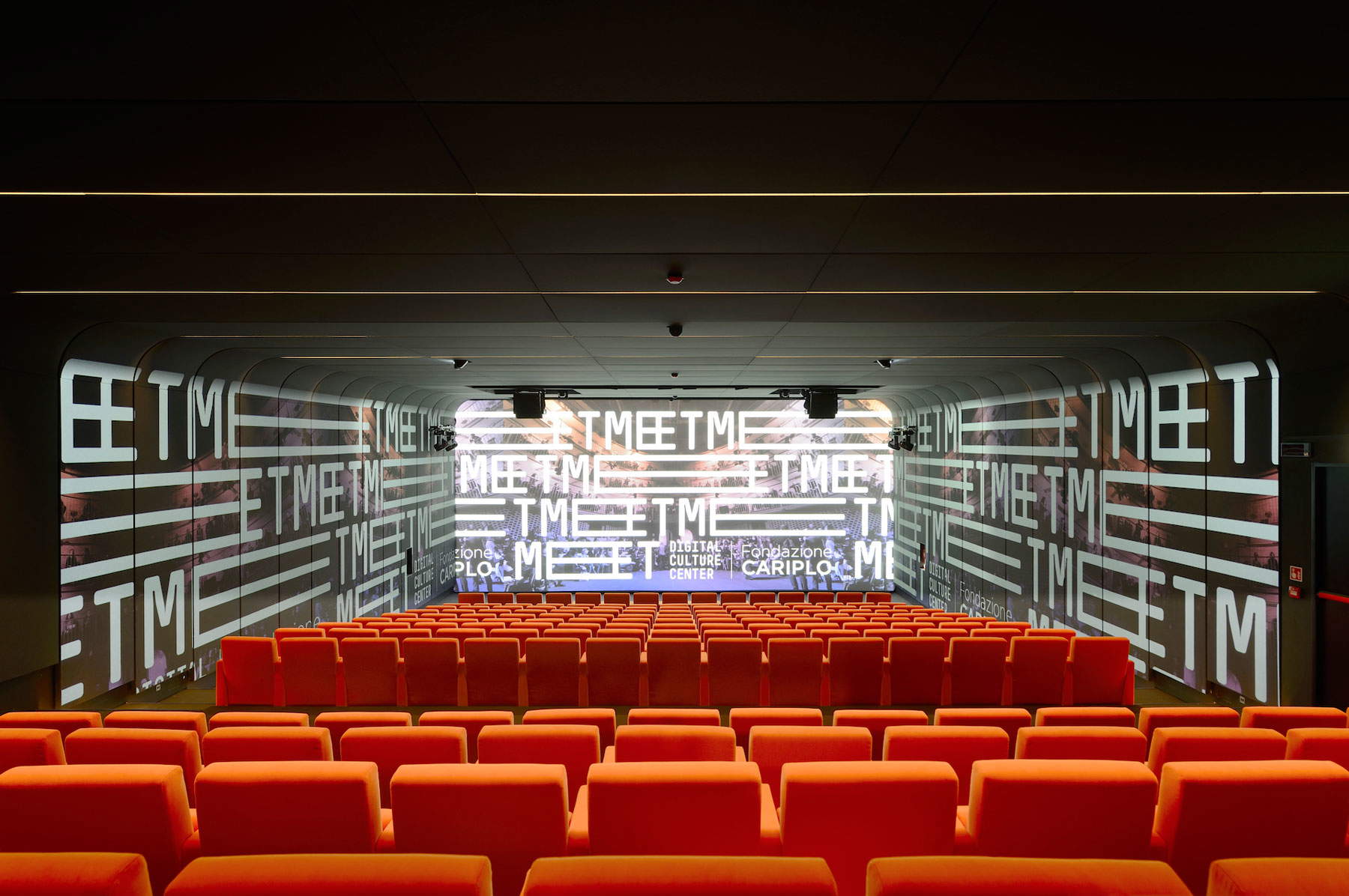When, on June 24, Minister Dario Franceschini announcedyet another reform of the Ministry (first of cultural heritage, now of culture) since he took office in 2013, few observers focused on the fact that among the four new autonomous institutes that were being created (now 43,at least one per region), in defiance of the increasingly precarious situation of the vast majority of state and non-state museums (since the creation of autonomous museums in 2016, visitor growth hasconcentratedon only a few dozen institutes), there was one that not only did not yet exist, but about which nothing was known: the location, the collection it was to house, the scientific-cultural project, the staffing... all that was known was the city, Milan, the name, “Museum of Digital Art,” and the fact that, being an autonomous institute, it would have, unlike the vast majority of Italian state museums, financial autonomy and a full-time director, chosen by qualifications and interview in an international call, paid 83.142.69 euros per year gross, plus eventual performance bonus of up to 15 thousand euros. A remarkable benefit for a museum completely in power.
Something more was unveiled on August 4, when the ministry announced the selection process for the directors of these four institutes: the archaeological park of Sepino (which today is freely accessible, but we have to think that this will end), the archaeological park of Cerveteri and Tarquinia, the National Picture Gallery of Siena, and, indeed, the “Museum of Digital Art” in Milan. From that announcement we know that, in the Ministry’s intentions, the new museum “will be dedicated to the production and presentation of digital content, playing a strategic role in the contemporary cultural scenario, which is increasingly digitized, connected and globalized, in which the very notion of work and audience is inevitably evolving.” Also in the ministerial press release of August 4, no information about the venue. That was instead unveiled by an article in the Corriere della Sera the following day, taken up byMilan’s Culture Councilor Filippo del Corno. From that and then other articles published between August 5 and 6, we know that the venue will be the former Albergo Diurno Venezia in Piazza Oberdan, an Art Deco jewel that has been in a state of semi-abandonment for a decade, whose opening to the publicwas entrusted to FAI in 2014 without getting a change of heart. We know that 6 million euros will be allocated, but this will not be enough to create the new museum, only to fix and restore the Hotel. And we know that the new state museum will make use of the collaboration ofMEET, an “international center” of digital culture created by the Cariplo banking foundation, which opened its doors in late October 2020 in the former Cinema Oberdan, in the immediate vicinity of the Albergo Diurno. A center that therefore, in just a few months of activity, becomes a privileged interlocutor of a state institution that has yet to be born.
From the public statements made on those days by the center’s director Maria Grazia Mattei, the deep-rooted collaboration, which seems to have been the basis for the birth of the new institution, is evident. The director confidently explained that the entire space will have to be redesigned in function of the new museum. And the museum, again according to Maria Grazia Mattei’s statement, will also include in an integrated or fully merged way the MEET. It is to be imagined, therefore, that it is from the MEET center that the director or director of the new Museum of Digital Art will come, despite the international nature of the announcement. Not least because, for a relatively limited and new field of art with little academic outreach in our country, it is hard to think of someone with more qualifications than Mattei herself, who has been involved in digital art since the 1990s. To understand more, the Finestre Sull’Arte editorial team had sent the MEET center some questions on August 18, including these: How did the collaboration between MEET and the Ministry of Culture come about and how did it contribute to the idea of the National Museum of Digital Art? For what reasons was the Albergo Diurno in Oberdan Square chosen as the venue? The center was born in 2018 and in just three years managed to get to work with the Ministry to establish an autonomous digital institute, how did you manage to achieve this important result? After forty days and numerous reminders by email and phone, no response came from MEET and Director Mattei.


If the logistics therefore are clear, and also who will collaborate, what is missing, however, is information regarding the museological and museographic project. Although in fact the ministry has communicated that this is the first public museum of its kind in the world, in reality ambitious examples exist all over the world, fromTokyo toBordeaux. To this should be added that, while there are few museums dedicated exclusively and sectorially to digital art, it has been widely musealized in recent decades, acquired in the permanent collections of contemporary art museums (including in Italy), proposed in temporary exhibitions or in international exhibitions such as biennials and triennials.One aspect is important to emphasize: when we talk about digital art, we are talking about an artistic medium that allows the amalgamation together of different languages (visual and audiovisual, photographic, textual, to name a few). The creation of works takes place in digital environments or through the use of technological media and software, requiring appropriate and specific instrumentation for each work, as well as careful and constant maintenance. Precisely for this reason, museums dedicated to this production are often located in spaces created from scratch or empty, filled with video projections, interactive or immersive installations, digital images, virtual reality environments, augmented reality, 3D images, post-produced works, and so on.
As Lorenzo Taiuti wrote in 2010 (and which we can still consider relevant), so many problems remain open regarding digital art, including, precisely, which museums and cultural facilities are suitable to preserve and exhibit it: “the digital work has an interactive nature and needs to develop relationships with the users. New cultural and design tools are needed that are capable of communicating such forms of creativity on a planetary level through the network and are available to include the public as an active agent in the aesthetic process. On the possible alternatives to the traditional museum are evidently also played out the possibilities of redefining art related to new media.”
In this case, a place steeped in history and strongly characterized was chosen as the exhibition space. Inaugurated “solemnly” (as the chronicle of the time tells us) in early 1926, after work lasted three years, the Albergo diurno was born near Porta Venezia, a new further center of Milan and of the frenetic life of the turn of the century, responding “to a need that had long been making its way among the growing development of this immense and busy neighborhood.” A variety of services were offered there, from the spa department (with, for example, a shower for 4 liras), to baths, hairdressing, or even clothes ironing, luggage storage, city telephone, and writing stations for 0.50 liras, to name a few; it grasped, therefore, the needs of inhabitants, passers-by and travelers. All in a deco style, imbued with the influences of taste of the early 20th century and still far from the typically regime style that would only later become established.An architecture with interesting characters, attributed with a study published in 2014 to the Milanese architect Piero Portaluppi, whose production characteristics were traced in some preserved elements, and in particular “behind the peculiar formal concept, the stylistic coherence, the whimsical elegance of the decoration and furnishings.”
These are all known facts, even to the City of Milan. In 2015, Corriere della Sera, echoing the words of FAI President Andrea Carandini, spoke of it as a "Pompeii of the 1900s“ in which we still find original furnishings, bathrooms and services, locker rooms and barbers’ studios, as well as period fixtures and signs and signage. The FAI in 2016 held a conference on the ”diurnal," which led to the publication of a volume that waspresented arguing that “knowledge is the basis for the recovery of cultural heritage assets whose nature, history and vocation are to be respected and enhanced through conscious, effective, durable and sustainable restoration and enhancement interventions.” All this, movable and immovable testimonies, still in place, an open book on Milan’s twentieth century, what should happen to it in the new museum? Of this memory, intrinsically linked to the history of the city and the neighborhood, what will remain in the Museum of Digital Art?


That from the dialogue between the twentieth-century hotel and the digital scaffolding can be born an evocative space of disarming beauty in fact there is no doubt. That this might be the best solution to enhance such an important monument to the Italian twentieth century instead leaves several doubts. That a space so cramped and constrained, and so rich in history and material culture, is the best place in Italy to develop an institution that would like to lead the way and be at the forefront of “presenting and producing digital content,” leaves even more perplexed. The risk is to neutralize the space, or rather, to create the illusion and narrative that the space is neutral: a nice container to be filled. The structure does, in fact, have its own specific history that could be eclipsed and exploited in favor of an admittedly evocative but partial display. Added to this are the doubts about the work to adapt the Hotel, which would inevitably alter the original layout. Particular attention, for example, should be paid to the sources of lighting: while the underground location could facilitate the setting up of some works that require screens or projectors, it could make it extremely difficult or impossible without radical interventions to display other kinds of works that are not suitable for the spaces the structure offers.
Since there is, as of today, no indication regarding the works that will be exhibited, we cannot rule out that only works perfectly suitable for being housed in the facility will be accepted in the new museum, but this would end up excluding works that need different spaces. We also do not know whether it will be an existing collection, a donation, whether there will be a call for new works made ad hoc, whether it will be curatorial choices or selections made later. And this would open up other thoughts as to how it will be acquired or granted, since it is not known to date whether the City and Ministry have down a plan, and what plan, on how to set up and form the permanent collection of the new museum.
Faced with the specificity of the space and the absence of a known collection, the choice of wanting to bring a more strictly contemporary production into the Albergo could also open up different consequences. The first would be to realize, in fact, a site-specific intervention, far from the perspective that an ever-expanding national museum should have. The second might be to fall into one of those crossovers, dii contaminations between past and present, so coveted in recent years. A crossover that, in this case, would be articulated in the “short” span of a century (from 1926 to 2021) and would force the union and comparison/clash between two different historical periods (that of the Milan of thebeginning of the twenty-year fascist period on the one hand, and that of contemporary cyberculture on the other) and of two diametrically opposed worlds and needs, that of the everyday life of a station and that of an artistic exhibition far removed from the function that the host space had. A crossover, it would seem, devoid of historical, symbolic or formal relations and relationships. In either case, the result would be a far cry from what a national museum, moreover one of the few national museums devoted entirely to contemporary art, should be.
The problems, in short, travel on two levels, different but complementary: the museological and the museographic. All these doubts about the choice of space, for a museum that one would like, or at least should be, in continuous expansion, increase when one notices the location near a private center that has been in existence for only a few months and that, without any public debate, will be inserted with both feet into the new...public project. And when one notices that the City of Milan was desperately looking for a redevelopment project after the flop of entrusting it to FAI. In September2020, the City Council wrote in a resolution that “the entire structure is in a very serious hygienic and sanitary situation, such as to configure an emergency scenario for human health (there are inside: various garbage and different material unrelated to the building) that has also resulted in a degradation of the building and its interior furnishings.”
Unfortunately, this is not the first time since Dario Franceschini has been in office that Milan has been chosen for the creation of new state-owned, or rather state-invested and foundation-run, cultural institutions, about which nothing was known until the day of the announcement. First there was the case of the National Museum of Resistance, which still has no collection, nor a director, but which is known to be located inHerzog’s much-disputedsecond Pyramid, near Garibaldi station: cost 15 million. For the building, it will have to be imagined, as themuseum project is still terribly vague. Then it was the case of the European Library of Information and Culture, conceived by afoundation that hasbeen in existence since 2004 and about which very little had been said, which will be financed with 110 million from the National Recovery and Resilience Plan (Recovery Plan) and will rise from scratch in Porta Vittoria. Now this Museum of Digital Art, a subject that still plays a marginal role in our country and for which there is still limited critical and scholarly debate; only 6 million invested, for now, but a top executive position guaranteed.
If there was really a need for a museum exclusively dedicated to digital art, in a country where funding for contemporary art and spaces continue to be insufficient, perhaps it should have been evaluated over the years, finding a suitable space for the project following public and collective evaluation. Because with a ministry that is understaffed and understaffed (we are now traveling, with retirements, at -9,000) any new museum will, automatically, be understaffed and understaffed, or at risk of closure. If there was a need to redevelop and reopen the Albergo Diurno Venezia to the public, and there undoubtedly was, perhaps the citizenry should have been asked if indeed a national, autonomous museum with no relationship to the place was a welcome solution. We say citizenry because we take it for granted that the Superintendency will be asked (once the project is approved and funded). So all that remains is to ask ourselves, and to ask the minister, why the rush to create a new museum, right there, why a fledgling private center knows more about it than any Italian citizen, and why, at a time when existing museums are gasping with numbers far from 2019, new ones continue to be opened. Was the failure of theMuseodel Novecento in Mestre not enough?
Warning: the translation into English of the original Italian article was created using automatic tools. We undertake to review all articles, but we do not guarantee the total absence of inaccuracies in the translation due to the program. You can find the original by clicking on the ITA button. If you find any mistake,please contact us.